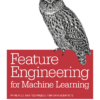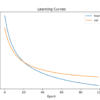Having familiarized ourselves with the theory behind the Transformer model and its attention mechanism, we’ll start our journey of implementing a complete Transformer model by first seeing how to implement the scaled-dot product attention. The scaled dot-product attention is an integral part of the multi-head attention, which, in turn, is an important component of both […]










